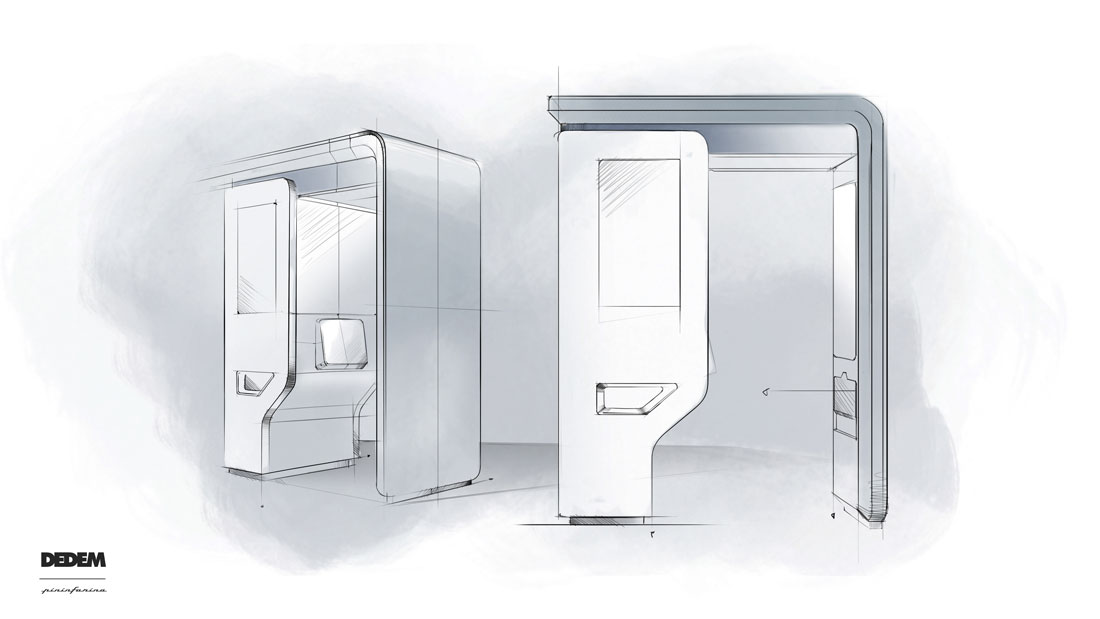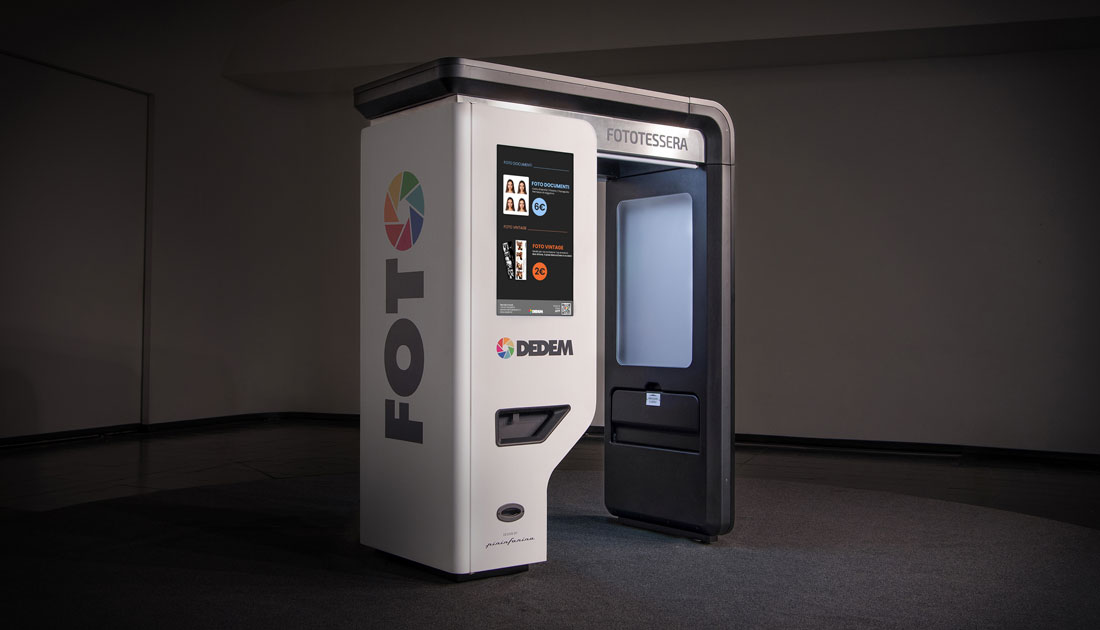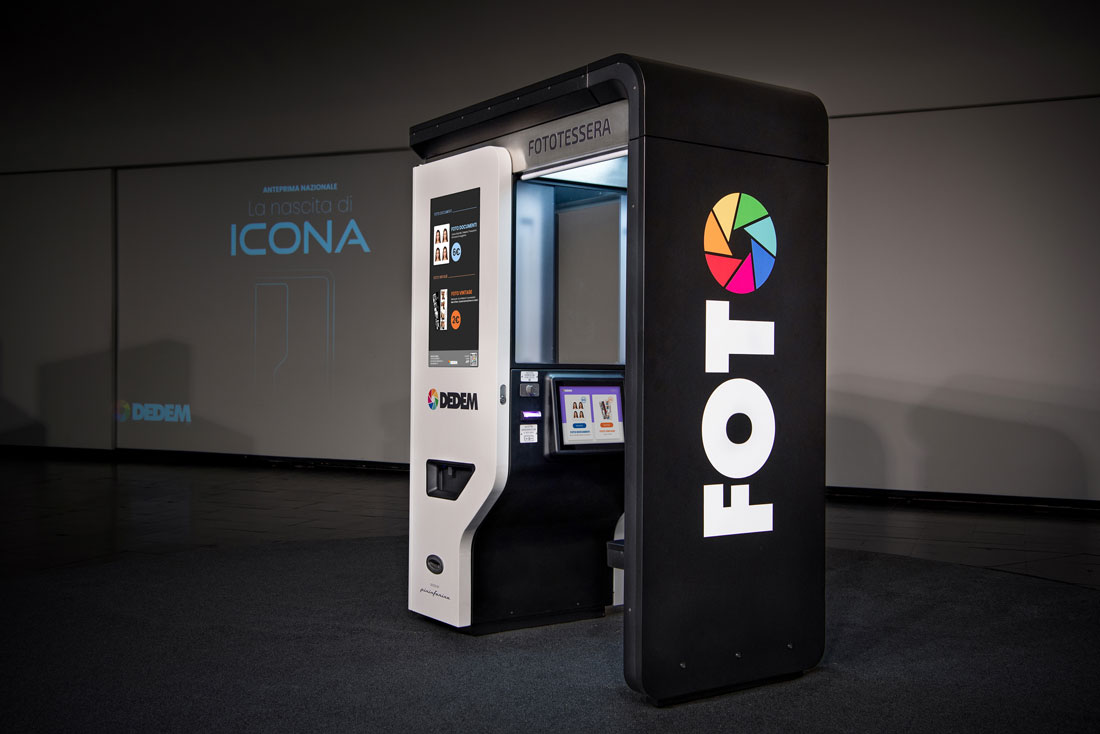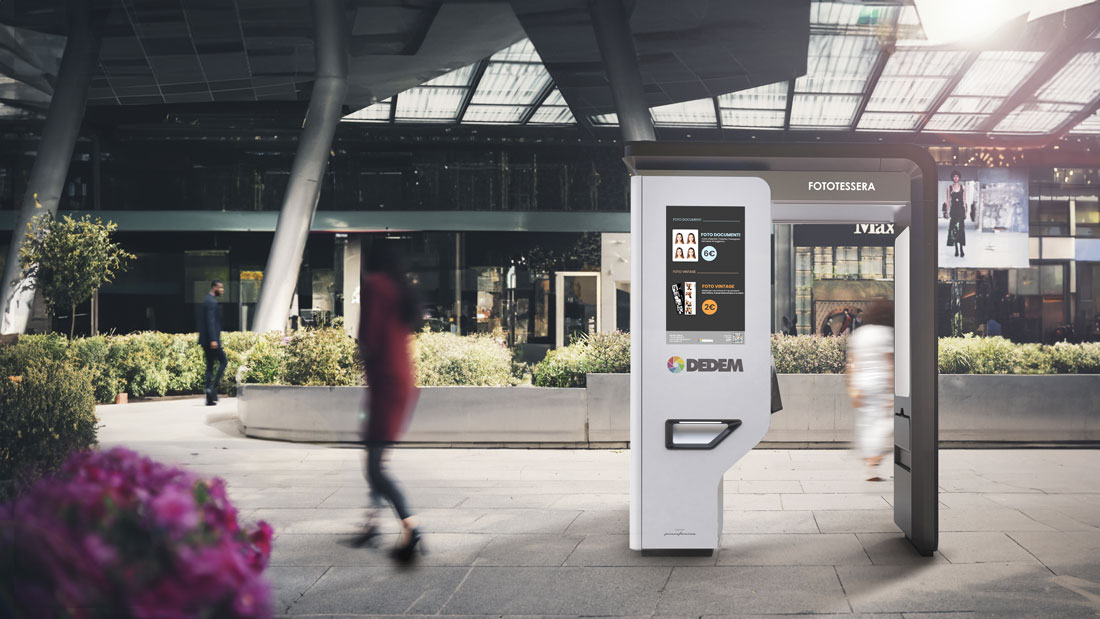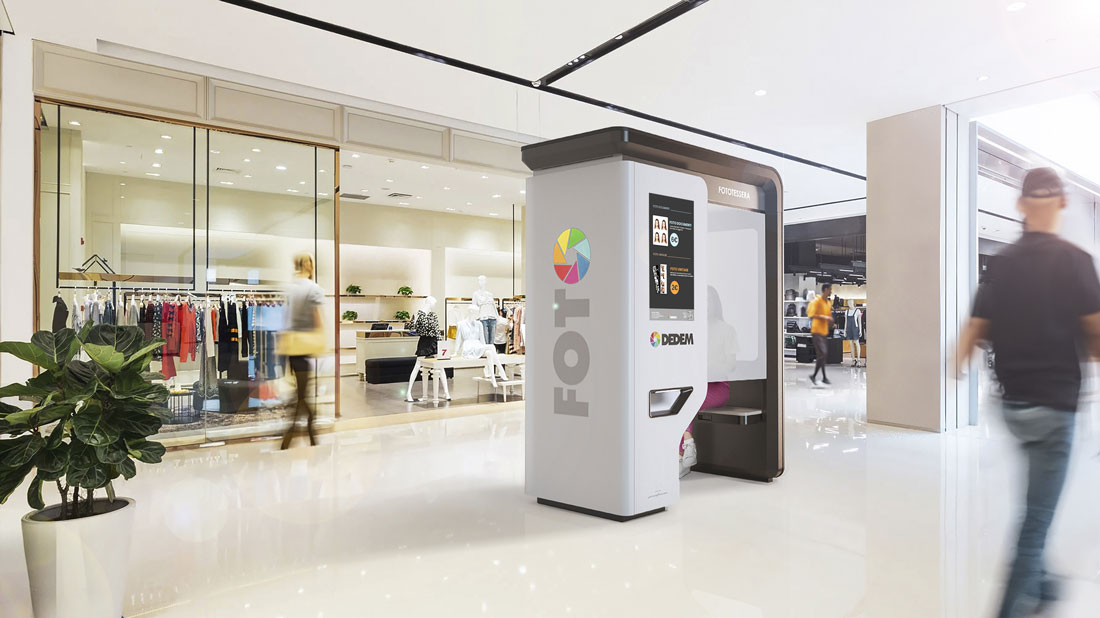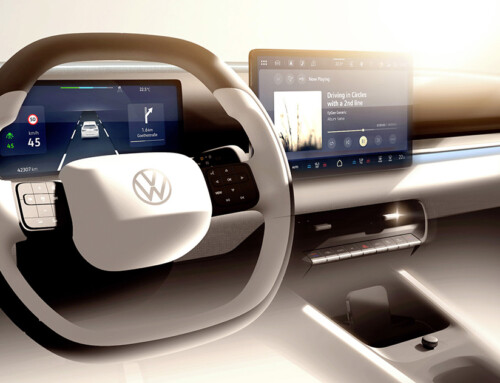A shared experience long before social media, a personal portrait long before the selfie. The passport photo machine has been a constant presence in Italian cities since 1962, the year of the first installation of a Dedem booth in Rome. An iconic object that has crossed the eras with a strong and characterizing identity, and has evolved with them.
“From the black and white printing which took about five minutes of the first machine in 1962, representative of widespread and popular access to photography, to the advent of the color in the 80s. From the printing in a few seconds of the 90s, to the digital integration, with the app, of the 2000s. Dedem and its cabins have always been able to renew themselves to keep up with new technologies and the changing needs of the user”, explained Alberto Rizzi, CEO of the Group. “It is an iconic object that comes from history and goes towards the future. With this awareness, the collaboration with Pininfarina was born to give a renewed stylistic identity to our passport photo booth”, he added on the world premiere in Cambiano at the headquarter of the Italian design house.
“Pininfarina has defined a unique and functional style for the new Dedem cabins, paying attention to three main aspects: simple and immediate user experience, adaptability to different urban contexts and accessibility”, said Nicola Girotti, head of Design at Pininfarina Industrial Design.
Made of stainless steel and innovative 3D printed materials, the new free-standing passport photo booth is the result of the intersection of three volumes, which give a feeling of momentum and lightness to the structure and at the same time allow its customization and integration harmonious in both internal and external spaces.
The interior is characterized by various elements that improve the experience, such as the full-wall mirror that gives a sensation of spaciousness, the curtains that come down automatically from above and the lights that turn on when the presence of a person is detected in the cabin. The user interface has also been totally redesigned and digitized to be more intuitive and user friendly: the new touch screens replace the physical buttons, guaranteeing a fast and intuitive navigation flow, starting from the selection of the desired product (photos for documents or “fun” shots with different selectable themes), up to the payment. Finally, the retractable reclining seat and the absence of a floor and both side walls make the cabin accessible and inclusive.

